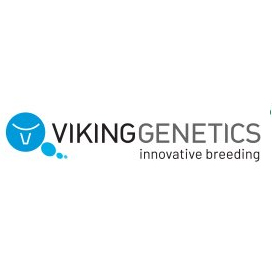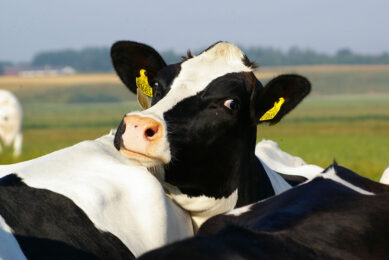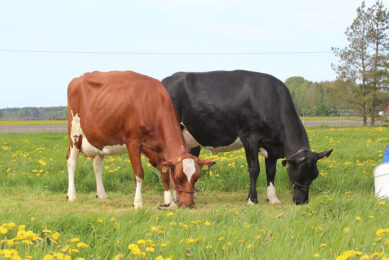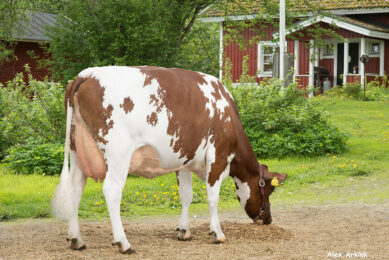Improving feed efficiency can reduce cattle emissions
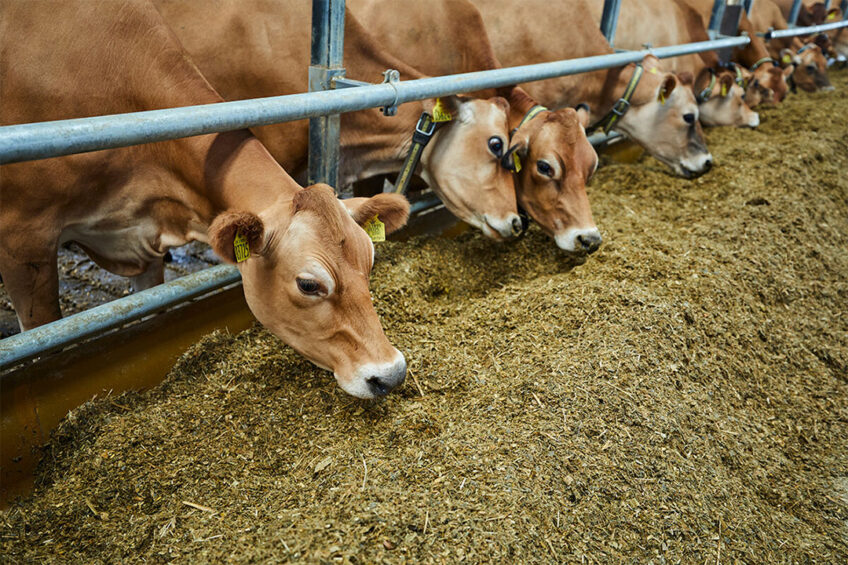
With the onus on farmers to reduce emissions from their herds, we look at how breeding cows with better feed efficiency can help achieve these objectives.
The agricultural industry is an easy target for governments to focus on to help reach overall climate goals, but it comes with a huge cost to farmers.
Research shows that cattle emissions in the Nordics can be reduced by approximately 20% by 2050 if farmers invest in their herd’s feed efficiency. Two experts on cattle breeding share their advice and knowledge on better feed efficiency and how it can impact your herd. These experts are Jan Lassen, PhD, senior project manager at VikingGenetics, and Coralia Manzanilla-Pech, PhD, assistant professor at Aarhus University’s Centre for Quantitative Genetics and Genomics in Denmark.
Measuring individual cow feed intake
Referring to data from the Saved Feed Index, using the Cattle Feed Efficiency System (CFIT) from VikingGenetics and Aarhus University can help dairy farmers reduce methane and save on feed costs. To date, CFIT has collected data from 12,000 cows with the aim of having over 30,000 cows registered on the system by 2025. But how can this help farmers?
“The CFIT system has been developed in VikingGenetics with collaborators for the last 7 years or so. It is a 3D-based camera system that measures individual feed intakes,” says Jan Lassen.
The 3D camera technology in the patented, artificial intelligence-based system takes pictures of the back of the cows together with their ear tag reading.
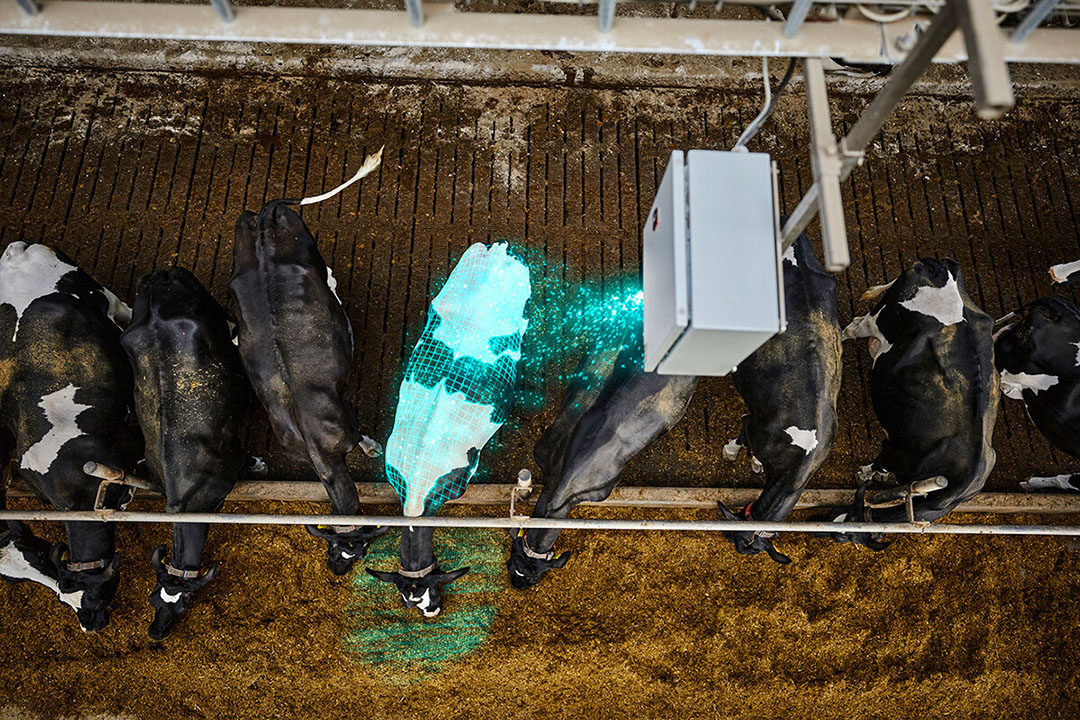
“We can use that information to refine the cows while they’re eating. We use the changes in the shape of the feed to quantify how much feed they’re eating,” adds Lassen. “The CFIT system monitors each individual cow’s feed intake 24/7. We combine that with a predicted weight from the 3D camera, so we can say based on an image how much a cow weighs.”
These 2 elements are key in making the Saved Feed Index, which assigns bulls breeding values based on how well their offspring performs for feed efficiency.
Chewing over the data
Feed is the biggest variable cost on any dairy farm; therefore, farmers know that the costs will come down if efficiency is improved. If a cow eats less yet maintains herself and produces more milk, then profits can be higher. Cows eating less per litre of milk they produce are also more climate-friendly.
“As researchers, we always need a large amount of data to estimate accurate genetic parameters and breeding values,” says Coralia Manzanilla-Pech. “And with more data, we will have better reliability for those breeding values. This is also a unique opportunity where we can measure a large amount of data on different commercial farms and breeds. But the most important is that it is continuous and will give us more information on what is happening through the lactation, but also in different and further lactations that we couldn’t have without the CFIT system,” she adds.
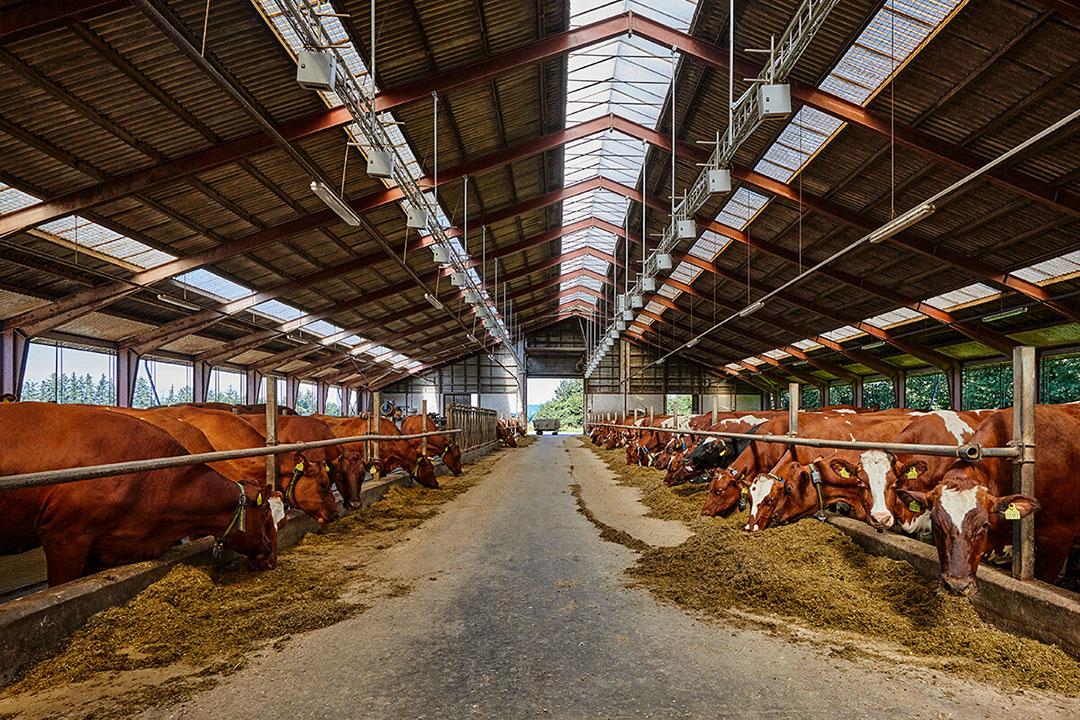
Breeding the climate-friendly cow
VikingGenetics is the only company that profiles a saved feed index on Jersey and Red Dairy Cattle. Having access to CFIT data from VikingGenetics’ 3 breeds makes it possible for researchers to study feed efficiency on other cattle breeds than Holstein-Friesian.
“I think one important thing is not maybe what breed to choose, but it’s how to make that breed more efficient or within the breed how to make the animals that you are using the best of it,” explains Manzanilla-Pech.
With all this data at hand, how can the Saved Feed Index help farmers breed more future-friendly cows by selecting for feed efficiency and reduced emissions?
“By using feed efficiency in the breeding goal, you are already selecting for cows that are low emitting in terms of methane. That means that if you are selecting in one way for more efficient cows, you are already selecting for cows that also produce less methane than the others,” concludes Manzanilla-Pech.
Find out more about the effects of breeding for improved feed efficiency.
Join 13,000+ subscribers
Subscribe to our newsletter to stay updated about all the need-to-know content in the dairy sector, two times a week.


